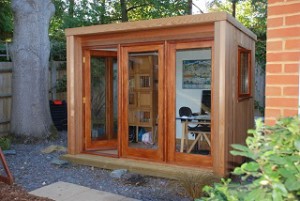From Guest Blogger Dimitris Papadopoulus: Micro-Housing Is a Sustainable Housing Trend

Spread over a few countries in Europe and also in the United States, the micro-housing movement is one of those small revolutions that might just be underway.
- Humble beginnings
Tiny homes are typically under 250 square feet and sometimes have wheels, making them highly adaptable. The movement was actually born in the USA in the noughties, a reaction against the average home size which had been creeping up enormously over the years: a 50% increase between 1978 and 2013. Of course, small houses have always existed all around the world, but it wasn’t until 2002 and Jay Shafer that it properly conceptualized and commercialised. Shafer founded his own Tumbleweed Tiny House Company to sell small, sustainable housing.
- Small house, bigger impact
How are tiny houses more sustainable than common homes? First and foremost, the reduced space prevents you from accumulating ultimately useless junk. Secondly, they are made of sustainable building materials, recycled or sustainably-sourced, be it for the double-glazing windows, roof and wall materials and furniture. Outdoor compost toilets and solar panels are often used in tiny houses to enable the user to live independently and off the grid while consuming and wasting less.
They are three types of tiny houses: on wheels for the more adventurous, transportable for people who wish to stay at one given place for a while (they don’t have wheels so will require the help of a professional transporter), or permanent.
- A tiny future?
Tiny houses in the USA still only represent 1% of the overall housing market but the trend will hopefully grow even bigger in the near future. In Europe, the micro-houses market is also growing in popularity with more and more tiny houses re-sellers joining the venture. In France more particularly, micro-housing has become a real trend. La Tiny House, a company founded in 2015 by Bruno Thiery and Mickaël Desloges, is getting a lot of traction, appealing to people wishing to live more sustainably but it can also be a solution in situations of precarious housings by providing an affordable, safe and practical home, temporarily or not. Will people be ready to give up on their 5-bedroom house dream? It’s too early to tell but things are changing.
